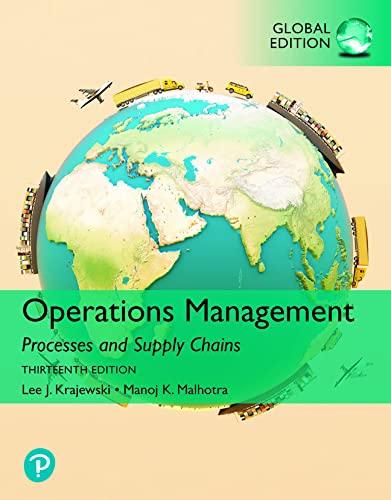They involve more automation in the kitchen and feature a special cooking process that retains the original-recipe
Question:
They involve more automation in the kitchen and feature a special cooking process that retains the original-recipe taste of the chicken. Although the process is more capital intensive, it would drive down labor costs, so the pretax profit for all sales (not just the sales from the capacity added) would go up from 20 to 22 percent. This gain would increase the pretax profit by 2 percent of each sales dollar through $800,000 (80,000 meals × $10) and by 22 percent of each sales dollar between $800,000 and the new capacity limit. Otherwise, the new alternatives are much the same as those in Example 5.2 and Solved Problem 2.
- Alternative 1: Expand both the kitchen and the dining area now (at the end of year 0), raising the capacity to 130,000 meals per year. The cost of construction, including the new automation, would be $336,000 (rather than the earlier $200,000).
- Alternative 2: Expand only the kitchen now, raising its capacity to 105,000 meals per year. At the end of year 3, expand both the kitchen and the dining area to the 130,000 meals-per-year volume. Construction and equipment costs would be $424,000, with $220,000 at the end of year 0 and the remainder at the end of year 3. As with alternative 1, the contribution margin would go up to 22 percent. With both new alternatives, the salvage value would be negligible. Compare the cash flows of all alternatives.
Should Grandmother's Chicken Restaurant expand with the new or the old technology? Should it expand now or later?
Data from Solved Problem 2
The base case for Grandmother's Chicken Restaurant (see Example 5.2) is to do nothing. The capacity of the kitchen in the base case is 80,000 meals per year. A capacity alternative for Grandmother's Chicken Restaurant is a two-stage expansion. This alternative expands the kitchen at the end of year 0, raising its capacity from 80,000 meals per year to that of the dining area (105,000 meals per year). If sales in year 1 and 2 live up to expectations, the capacities of both the kitchen and the dining room will be expanded at the end of year 3 to 130,000 meals per year. This upgraded capacity level should suffice up through year 5. The initial investment would be $80,000 at the end of year 0 and an additional investment of $170,000 at the end of year 3. The pretax profit is $2 per meal. What are the pretax cash flows for this alternative through year 5, compared with the base case?
Data from Example 5.2
Grandmother's Chicken Restaurant is experiencing a boom in business. The owner expects to serve 80,000 meals this year. Although the kitchen is operating at 100 percent capacity, the dining room can handle 105,000 diners per year. Forecasted demand for the next 5 years is 90,000 meals for next year, followed by a 10,000-meal increase in each of the succeeding years. One alternative is to expand both the kitchen and the dining room now, bringing their capacities up to 130,000 meals per year. The initial investment would be $200,000, made at the end of this year (year 0). The average meal is priced at $10, and the before-tax profit margin is 20 percent. The 20 percent figure was arrived at by determining that, for each $10 meal, $8 covers variable costs and the remaining $2 goes to pretax profit. What are the pretax cash flows from this project for the next 5 years compared to those of the base case of doing nothing?
Step by Step Answer:

Operations Management Processes And Supply Chains
ISBN: 9781292409863
13th Global Edition
Authors: Lee Krajewski, Naresh Malhotra, Larry Ritzman





